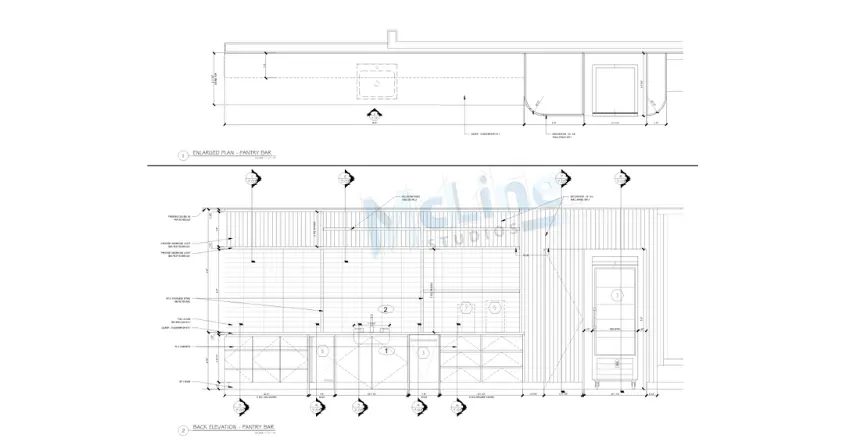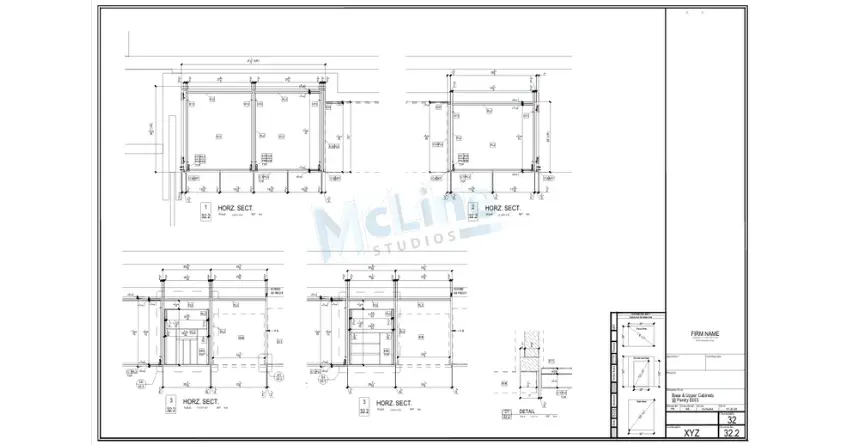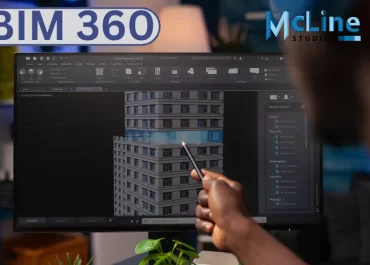The main purpose of interior design drawings is to convey to the designers or any stakeholder the intended layouts, aesthetics, and functionality involved in the project. It also facilitates precise planning, efficient use of space, and effective collaboration among stakeholders, including architects, contractors, and clients.
Interior design drawings are detailed plans and illustrations that depict the layout, dimensions, and design elements of a space, guiding the construction and decoration process.
These drawings act as a blueprint that ensures all the parties involved in the project are aligned with the overarching concept and specific elements before construction begins.
These drawings facilitate problem-solving and decision-making throughout the design process, allowing designers to explore multiple options, identify potential issues, and make informed choices regarding spatial planning, material selection, and other critical factors.
In short, interior design drawings bridge the gap between imagination and reality, representing a thoughtfully curated living or working environment. In this article, we will explore more about the purpose of interior design drawings.

Provides Visualization
Interior design drawings offer a detailed representation of the design plan, allowing clients and designers to see the proposed space layout, furniture placement, and color schemes before any actual work begins.
These drawings include floor plans, elevations, and 3D renderings, which help in comprehending spatial relationships and design elements. This visualization process ensures that all stakeholders have a clear understanding of the project, facilitating better communication and decision-making.
Moreover, it helps in identifying potential issues and making adjustments early in the design phase, saving time and resources during the implementation stage.
Helps In Better Communication
It facilitates effective communication among clients, designers, and contractors. These detailed visual representations convey the designer’s vision, showcasing layouts, color schemes, furniture placement, and material selections.
These drawings ensure that all stakeholders share a common understanding of the project’s scope and aesthetics. They minimize misinterpretations and ambiguities, enabling precise planning and execution.
Planning And Coordination
These drawings serve as detailed visual guides that communicate the designer’s vision, ensuring that all stakeholders from clients to contractors are aligned.
They provide precise measurements, material specifications, and layout configurations, facilitating accurate cost estimations and timely project completion.
These drawings help identify potential issues early, enabling proactive solutions. They coordinate various elements such as lighting, furniture placement, and electrical systems, ensuring a cohesive and functional outcome.
Project Documentation
Interior design drawings serve as crucial project documentation by providing a visual and technical reference for all stakeholders involved.
These detailed plans ensure that designers, contractors, and clients have a clear understanding of the project’s scope, layout, and specifications. They include floor plans, elevations, sections, and detailed drawings that illustrate materials, finishes, and fixtures.
This comprehensive documentation helps in accurate budgeting, scheduling, and execution, minimizing misunderstandings and errors.
It also serves as an official record for approvals, permits, and future maintenance or renovations, ensuring that the design intent is preserved and adhered to throughout the project’s lifecycle.
Budgeting And Resources Management
These drawings outline the specifications for materials, finishes, and furnishings, enabling precise cost estimation and allocation of resources.
With the help of these drawings, designers can identify the exact quantity of materials needed, reducing waste and avoiding over-purchasing.
Additionally, clear drawings facilitate better communication with contractors and suppliers, ensuring that everyone is on the same page and minimizing costly errors or changes during implementation.
Legal And Compliance
Interior Design Drawings serve a crucial legal and compliance function by ensuring that designs adhere to building codes, zoning regulations, and safety standards.
These drawings provide a detailed visual representation of the proposed design, facilitating communication between designers, clients, and regulatory authorities.
They document essential elements such as structural integrity, fire safety measures, accessibility features, and electrical layouts, ensuring that the final design meets all legal requirements.
Components Of Interior Design Drawings
Interior design drawings typically consist of several key components that convey the design concept and specifications to clients, contractors, and other stakeholders. Here are some common components:

- Floor Plans: Floor plans are 2D drawings that provide an overhead view of the space, showing the layout of rooms, walls, doors, windows, and major fixtures. They indicate the dimensions of each element and may include furniture placement.
- Elevations: Elevations are 2D drawings that depict the vertical surfaces of the interior, including walls, cabinets, and other built-in elements. They show the height and details of each surface, often including notes on materials and finishes.
- Sections: Sections are vertical or horizontal cutaway views that reveal the interior structure of the space. They may show details such as ceiling height, wall construction, and relationships between different areas.
- Renderings: Renderings are realistic or stylized representations of the interior design, often created using computer software. They provide a visual interpretation of how the space will look when completed, including lighting, materials, and furnishings.
- Material and Finish Schedules: These schedules list all the materials and finishes to be used in the design, including paint colors, flooring types, countertop materials, and more. They may include product specifications and quantities.
- Furniture Plans: Furniture plans show the placement and arrangement of furniture within the space. They may include measurements and annotations specifying the type and size of each piece.
- Lighting Plans: Lighting plans indicate the location and type of lighting fixtures, including overhead lights, sconces, and task lighting. They may also include specifications for light bulbs and lighting controls.
- Electrical Plans: Electrical plans show the placement of electrical outlets, switches, and other electrical components. They ensure that the electrical system meets the needs of the space and complies with building codes.
The Bottom Line
In conclusion, interior design drawings serve as the blueprint for transforming creative visions into real spaces. They bridge the gap between concept and execution, providing essential guidance for architects, designers, and contractors throughout the entire construction process.
These drawings not only communicate aesthetic preferences but also convey crucial technical details such as dimensions, materials, and spatial arrangements.
Moreover, they facilitate effective collaboration among stakeholders, ensuring that everyone involved shares a clear understanding of the project’s objectives.




